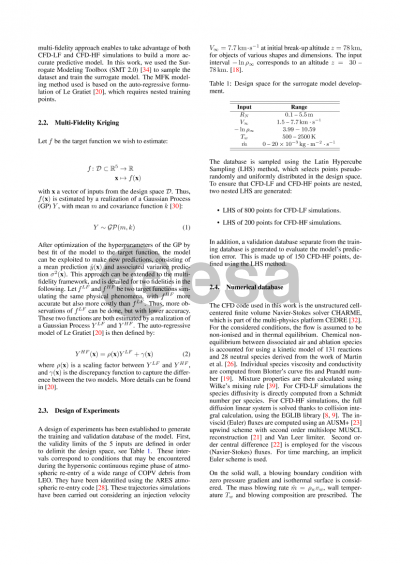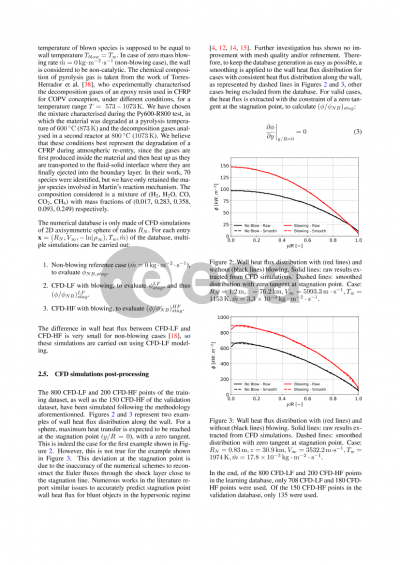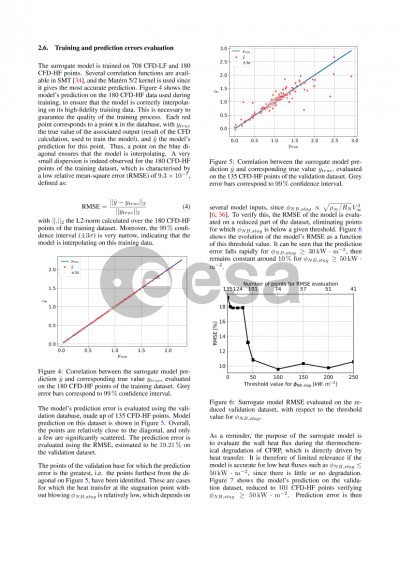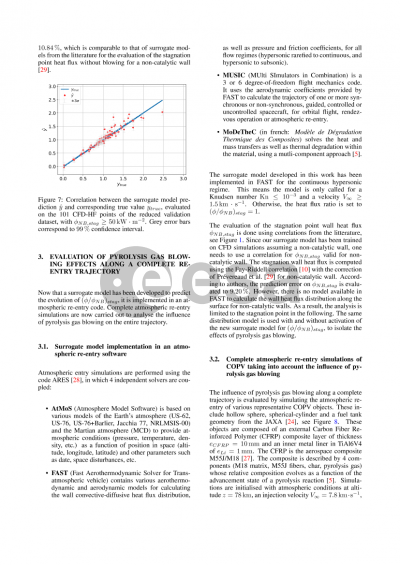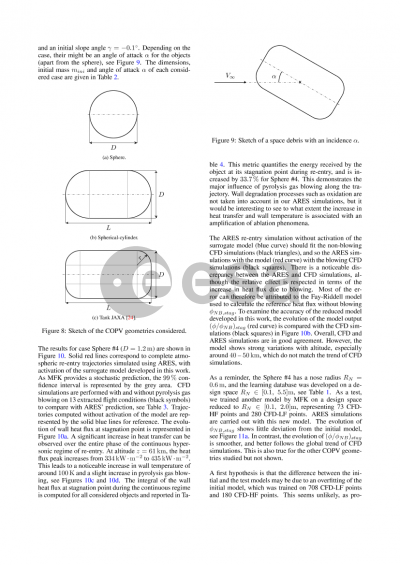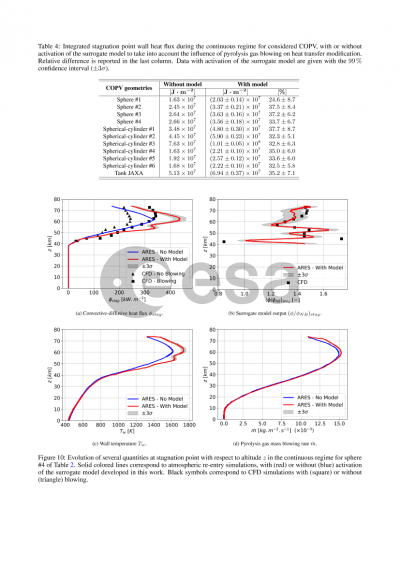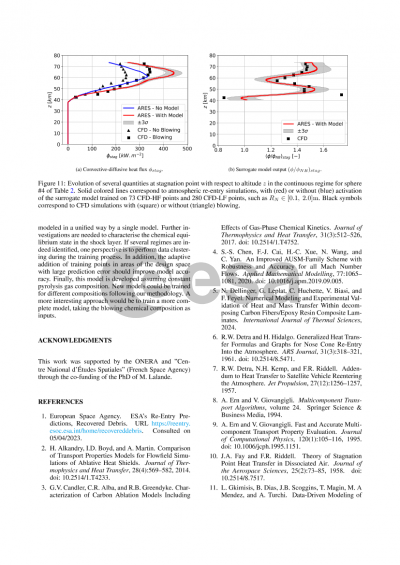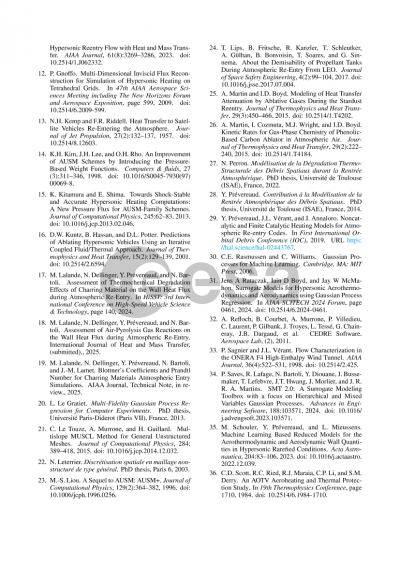Document details

Abstract
While some part of space debris disintegrates during atmospheric re-entry, some may survive and pose a ground risk in the event of an uncontrolled re-entry. According to ESA, a third of the recovered debris are Composite Overwrapped Pressure Vessels (COPV), i.e. tanks made of an inner metal liner and an external Carbon Fiber Reinforced Polymer layer. When submitted to the significant aerothermal heating as the one encountered during the re-entry, this kind of composite materials degrades and pyrolysis gases are blown into the boundary layer. Thus, there is a strong physical coupling between the flow and the thermochemical response of the material. CFD simulations in chemical non-equilibrium with 28 species and 131 reactions have been carried to investigate the influence of the blowing rate and the reactions between the degassed species and the air. The wall heat flux can either be reduced by the convective blocking effect of the blowing, or increased up to a factor 2 because of the strong exothermal chemical reactions occuring between the ablation byproducts and the air species in Earth atmosphere. It is also shown that the pyrolysis gas composition has a major influence on this phenomena. Even though CFD codes enable to model these phenomena, such tools are too costly for complete trajectory calculations. Correlations employed in atmospheric re-entry codes allow for rapid modelling of vehicle aerothermodynamics; however, they do not account for complexe gas-surface interactions as ones described previously.
In this work, we developed a surrogate model to predict the stagnation point wall heat flux modification due to blowing effect and chemical reactions close to the wall in the continuous hypersonic regime. Five input variables representative of the flight conditions (altitude, speed), wall conditions (temperature, blowing rate) and geometry (nose radius) for a given pyrolysis gas composition are considered. The training database is made up of roughly 1000 CFD simulations. In the presence of pyrolysis gas blowing, the accuracy of the diffusion coefficients has a major influence on the wall heat flux, but their faithful modelling can have a significant CPU cost. Two types of CFD simulations are conducted: the species diffusivity is either directly computed from a Schmidt number per species, or obtained from the full resolution of the diffusion linear system thanks to collision integral calculation. The two modelling approaches are referred to as ``low-fidelity'' (LF) and ``high-fidelity'' (HF) respectively.
The surrogate model is developed using Multi-Fidelity Kriging methods, which take advantage of LF and HF simulations simultaneously. We first defined the design space for the model inputs covering the continuous hypersonic regime for COPVs re-entering the atmosphere from Low Earth Orbit. Then, the sampling of the learning dataset is built from two nested layers, each with a Latin hypercube structure. The model is trained and validated on a new dataset with low prediction errors and is implemented in an atmospheric re-entry code to assess the influence of pyrolysis gas blowing along a complete trajectory.
Preview


